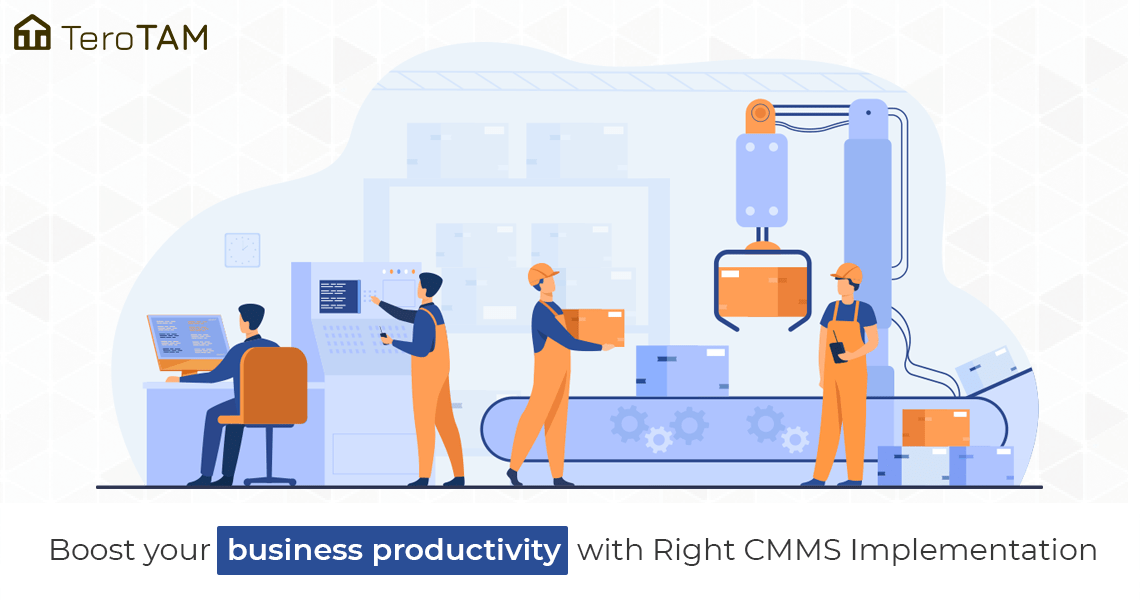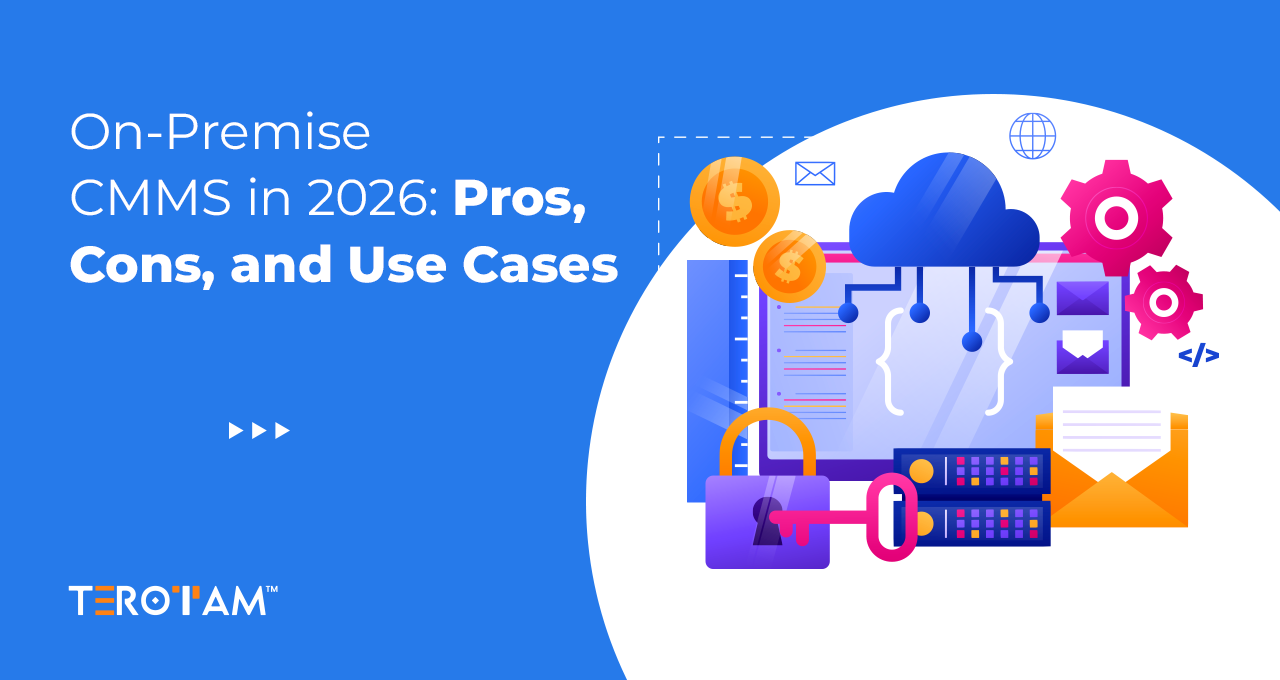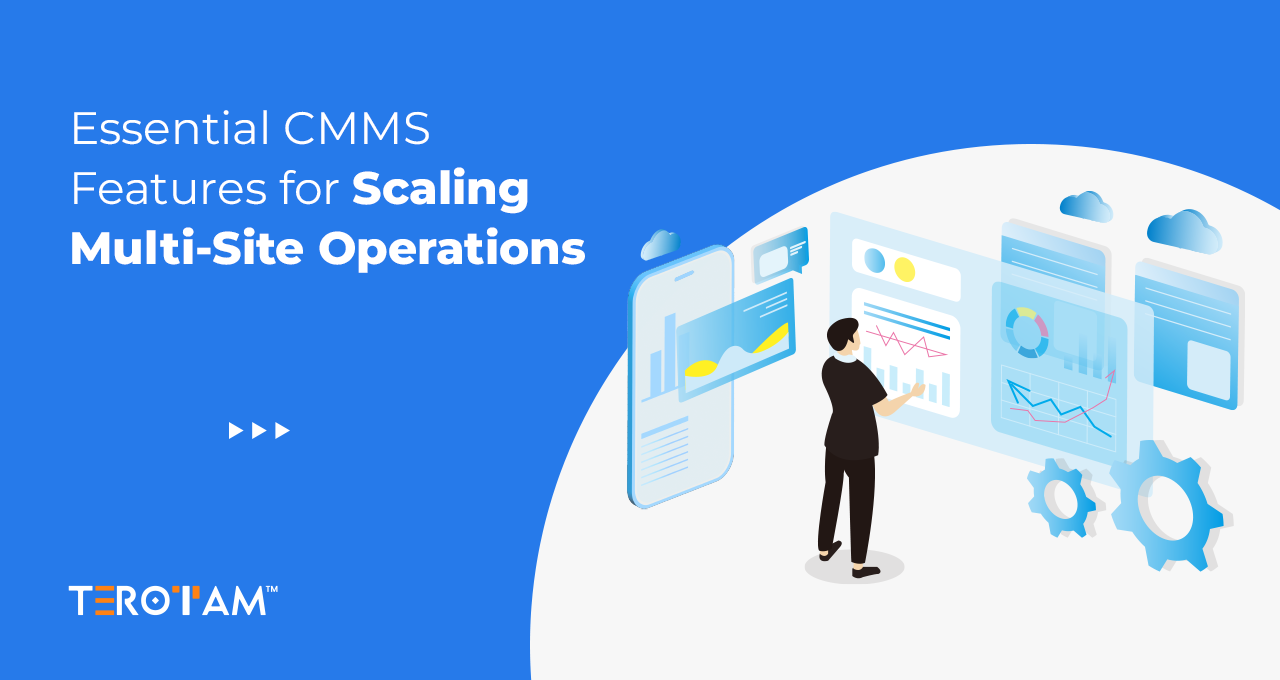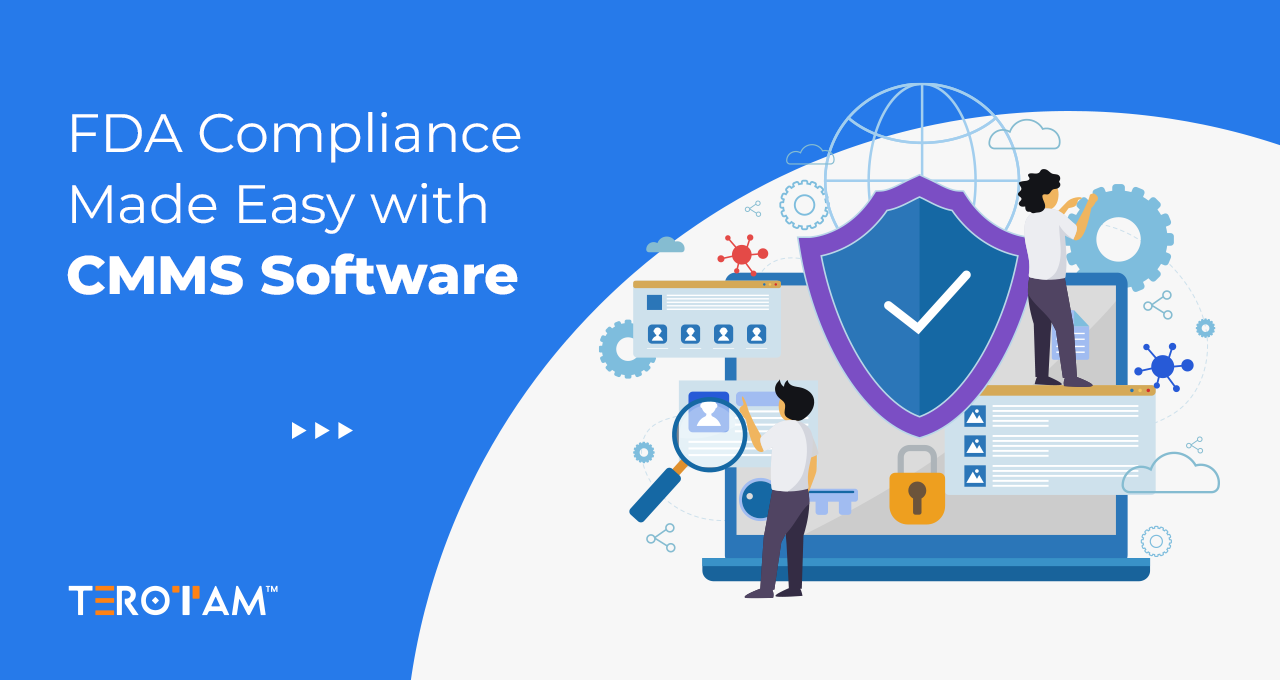Implementing a CMMS is one of the smartest decisions a business can make—but it isn’t always easy. Many organizations underestimate the effort required. The reality is that switching from manual processes or outdated systems to a modern CMMS demands time, financial investment, and a major cultural shift across teams.
From aligning workflows and digitizing maintenance routines to training teams and ensuring system adoption, the transition can feel overwhelming if not planned correctly. However, when implemented the right way, a CMMS can transform your operations—reducing downtime, improving asset performance, and boosting productivity at every level.
In this guide, we’ll walk you through why CMMS implementation matters, the common pitfalls businesses face, and the key steps you must take to avoid failure and ensure a smooth, successful transition.
5 Reasons You Must Implement a CMMS in Your Business
1. To lower down Downtime and Overtime costs
Implementing asset management software will assist in expediting planned maintenance and preventing it. This drastically reduces downtime. You won’t have to stop production for any unexpected breakdown if the repairs are arranged ahead of time.
2. Cutdown manual work dependency
Implementing a CMMS can assist in reducing the number of days and hours spent manually filing and maintaining records. Your personnel will be able to devote more time to asset production, management, and care if they spend less time on record keeping. This will also help you extend the life of your assets and improve your bottom line. Human error, which is widespread in manual efforts, is also reduced by using a CMMS Software.
3. Boost your team performance
A CMMS can track data such as how much time an employee spends on a specific task or if they have been involved in any shop-floor incidents, among other things. Using this knowledge, you can take the required steps to improve their performance and safety. When employee productivity rises, so does your company’s productivity.
4. To manage Compliance issues and Safety Standards
Every employee expects to work in a safe atmosphere, which isn’t unreasonable. Computerized maintenance management systems can assist in this endeavor. Safety checks and compliance may be built into each maintenance work, ensuring that technicians and operators stay safe and follow rules while doing repairs. It also helps you stay within the compliance guideline with preset work rules and regulations and keeps you ready for inspections.
5. Easy to implement Preventive Maintenance
The preventative maintenance process will be automated by using a CMMS to track and anticipate maintenance dates, technician schedules, tasks, repair reports, and part inventory, among other things.
Why Does CMMS Implementation Fail?
Lack of Support From Management
A lack of strong support from top or middle-level executives often leads to CMMS implementation failure. These decision-makers are typically responsible for providing budgets and incentives. If they aren’t fully committed to the project, it’s likely that funding will be cut or the initiative will be continuously deprioritized.
Unwilling Team Members
Resistance from users who either do not want to use the CMMS or don’t understand how to use it is a common reason for implementation failure. That’s why it’s essential to involve all affected team members in the process. During vendor evaluation and software selection, user input is crucial. Skipping this step often results in selecting a system that’s unnecessary, complex, or frustrating to use.
Lack of Training
Without proper training, users cannot use the CMMS effectively, which significantly impacts performance and undermines the software’s value.
Unclear and Uncoordinated Goals
If a company lacks a clear implementation goal, the likelihood of successful CMMS adoption drops. Without defined roles, responsibilities, and measurable objectives, user engagement remains low, and tasks often become incomplete, inaccurate, or overlooked—negatively affecting the entire organization.
How to implement a CMMS successfully?
- Calculate the value:
What are the advantages of a computerized maintenance management system for your company? Make an effort to answer this issue in terms of return on investment. What will truly benefit your bottom line is how your CMMS assists your personnel in making better use of maintenance data. - Close alignment with Key work departments:
On your CMMS planning team, include people from the production, planning, purchasing, operations, and IT departments, as these are the departments that will be most affected by a new solution. Allow them to advise you on which company procedures need to be improved. Then come up with a set of goals that are aligned with the new business procedures. - Realistic Budget:
To avoid the tedious process of increasing expense estimates, be a little pessimistic when it comes to the budget. Customizing the CMMS and integrating it with existing software are two significant costs. The costs of implementation and continuous maintenance are also considerable. During the early phases of your CMMS deployment, make sure to account for all of these costs. - Organize Maintenance data:
A computerized maintenance management system’s backbone is the underlying maintenance data. Most businesses save duplicate and out-of-date information in many locations. Before implementation, putting this data in a uniform database, cleansing it, and making it available to the entire business will ensure a seamless rollout. - Prepare your team for change:
Don’t assume that all of your staff will enthusiastically embrace the CMMS. Employees may perceive the CMMS as a tool that will eventually replace them, and workers are wary of anything that threatens their jobs. It’s critical to involve all of your employees early in the process, distribute informational memorandum about the change, and arrange question-and-answer sessions to gather employee feedback so that workers feel invested in the project and enthused about the potential benefits of CMMS. - 360-degree training to employees:
Initial software training from the CMMS vendor will be required, as well as continuous (or internal) training for your personnel. Every company uses a CMMS in a unique way, therefore your workers will need to be trained on how to use yours. - Maximum Data gathering:
The most common cause of CMMS implementation project failure is the failure to collect all of the necessary and usable data that your staff will need to submit into the system. Gathering all of the data effectively normally takes six to twelve months of dedicated labor resources. An important component of your implementation plan is deciding what data will be collected and how that data will be collected. - Report and Analytics Accuracy:
What decisions will be made in light of the findings? Figure out what you want your system to do for you before you start setting it up. Make your reports as specific as possible. Also, make sure your reports provide you with the data you need to identify short- and long-term maintenance trends. - Find a Reliable CMMS vendor with a feature-rich system:
Look for a financially stable vendor who has demonstrated the ability to scale the solution as your business grows. Providers who rely heavily on partners for crucial functionality should be avoided. When looking into industry-specific software, make sure to check to see if it lives up to its claims. Experiment with the software. Choose just enough functionality to fulfill your company’s requirements without sending your IT personnel on a wild goose chase. - Implement CMMS step by step:
Start with a single department that stands to benefit the most in the short term, and then go on to a rabid, company-wide CMMS advocate. Getting everyone on board will be a lot easier once others see the first department’s initial success. - Develop a Culture for Continuous Follow-up and Improvement:
As a firm and its business evolve, CMMS solutions should be updated to provide a stronger competitive edge. Keep staff informed so they may contribute to the continuous improvement of how the system uses asset and maintenance history data.
Conclusion
A CMMS should be seen as a vital tool in the maintenance team’s toolbox. Just as using the right hammer makes a task easier, using a CMMS correctly can simplify and enhance your entire maintenance process. When implemented effectively, it becomes a central hub of maintenance data—helping teams adopt best practices, reduce downtime, and uncover new opportunities for efficiency.
Want to see how CMMS can transform your operations? Connect with our experts or email us at contact@terotam.com to discover how TeroTAM can take your business productivity to the next level.










